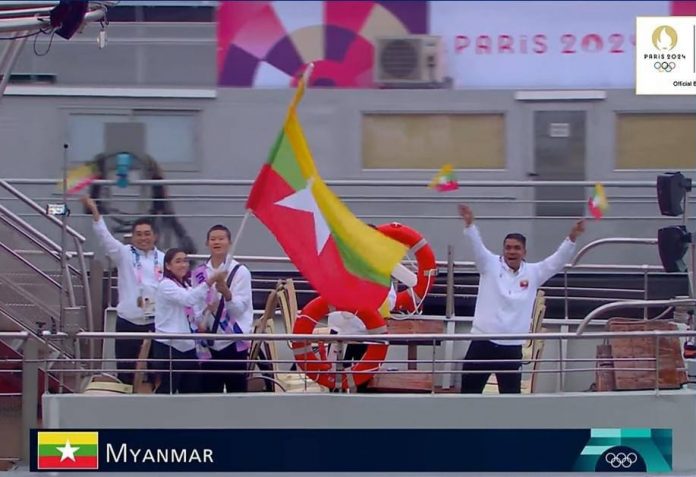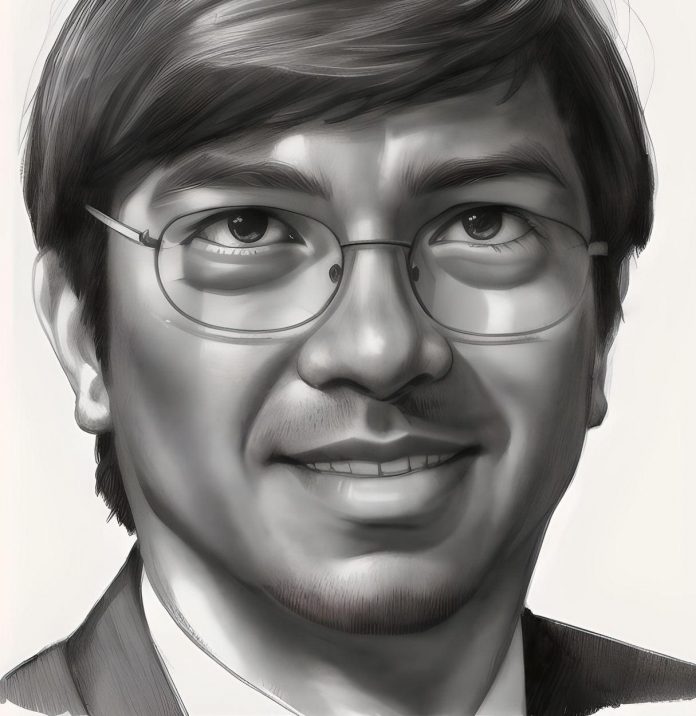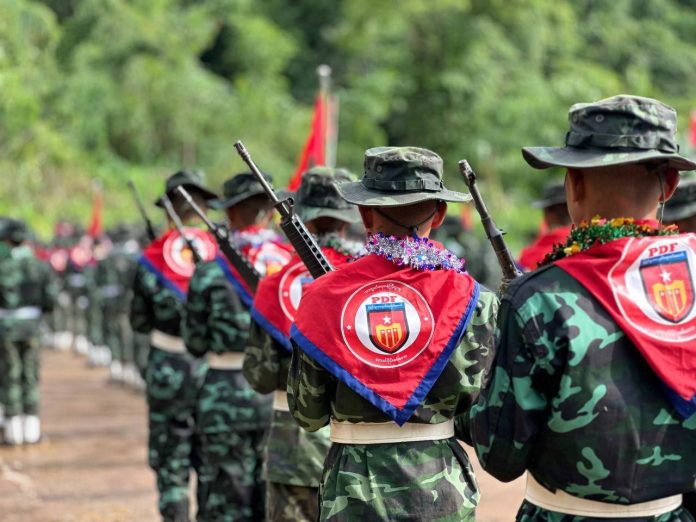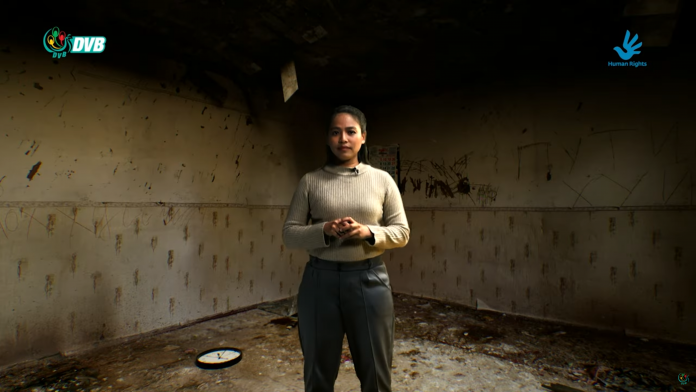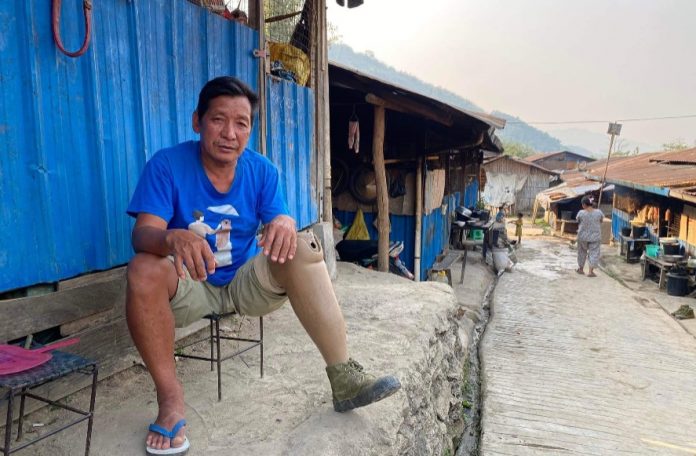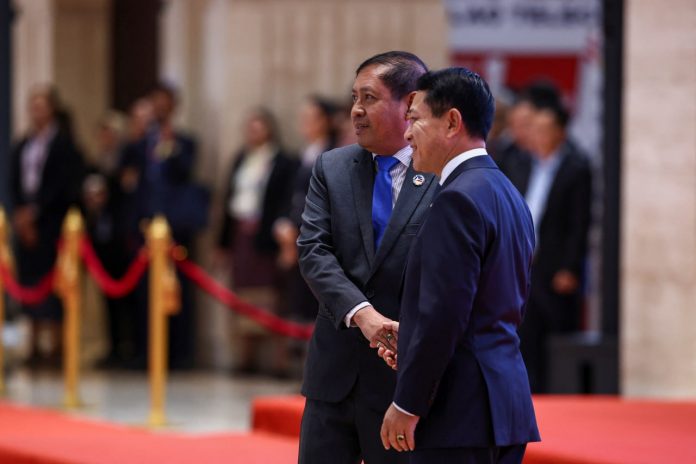Athletes from Burma compete at the Paris 2024 Olympics
Two Olympic athletes from Burma are competing in badminton and swimming at the 2024 Paris Olympics. Thet Htar Thuzar is representing Burma in badminton for the second time after the Tokyo 2020 Olympics.
“Thank you all for supporting me, especially those who visited the game in person. I lost the match but it felt great to play,” Thet Htar Thuzar posted to her social media account after losing her first-round women’s singles match to Akane Yamaguchi from Japan on Saturday.
Thet Htar Thuzar will also be competing with Michelle Li from Canada in the women’s group match on July 30. Phone Pyae Han, a 16-year-old student from Burma who has been swimming since the age of nine, will compete in the men’s 100 meter freestyle on July 30. The Paris 2024 Olympics are from July 26 to Aug. 11.
Thailand taskforce to investigate Naypyidaw weapons purchases
Thailand’s Ministry of Foreign Affairs stated on Wednesday that a task force will be established by the Bank of Thailand and the Anti-Money Laundering Office to prevent financial transactions that may be used to fund arms sales and human rights abuses in Burma.
“We [have received] positive signs from Thai banks and positive signs from the Anti-Money laundering office,” said Rangsiman Rome, a member of Thailand’s House of Representatives and chair of the parliamentary committee on national security and border affairs, who presented evidence to the Thai banks.
The U.N. Special Rapporteur on human rights in Burma Tom Andrews released a report this month stating that companies registered in Thailand utilized Thai banks to transfer weapons and related materials worth $120 million USD in 2023 to Burma, up from $60 million USD in 2022.
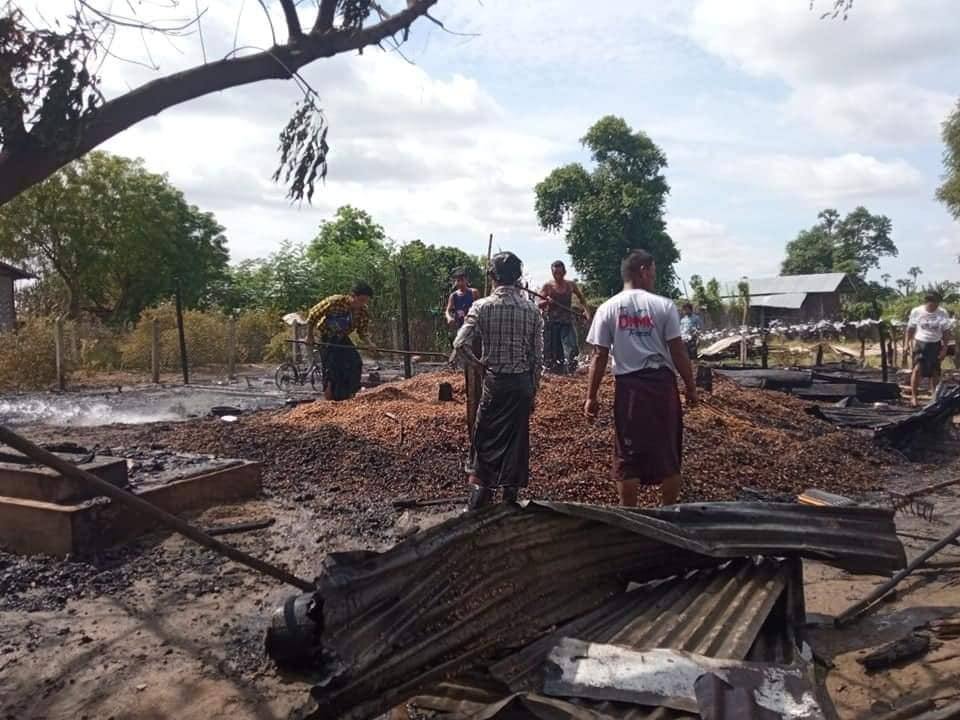
Over 1,100 arson attacks in June, says independent research group
Data for Myanmar has documented that the military burned down 1,109 homes last month with nearly 15,000 targeted in arson attacks so far this year. It added that over 95,000 civilian homes have been burned down nationwide by the military since the 2021 military coup.
“All armed groups should adhere to the rules of engagement as much as possible to minimize civilian casualties.” a member of Data for Myanmar told DVB on the condition of anonymity.
It went on to state that resistance forces have reportedly set fire to civilian homes during attacks against pro-regime militias in Magway and Mandalay regions. Over the last year, homes in Sagaing, Magway and Mandalay regions, as well as Chin and Rakhine States, were targeted the most often by arson.
News by Region
ARAKAN—The Arakan Army (AA) warned residents living near the Tha Htay Chaung hydropower dam project to evacuate from their homes as the water level in the dam breached a critical threshold in Thandwe Township on Saturday.
“We released this emergency warning as the rainfall may continue the next few days that would cause flooding,” the AA stated. Telecommunication services are unavailable in Thandwe. Flooding has also occurred in Taungup and Gwa townships due to rain.
SHAN—The Ta’ang National Liberated Army (TNLA) claimed that 125 residents, including nine children, have been killed and 167 have been injured in areas under its control in northern Shan since fighting with the military resumed on June 25. It added that 93 houses, eight monasteries, and seven schools were destroyed.
Three family members were killed when an artillery shell hit their home in Lashio on Thursday. “The family was killed on the spot,” a Lashio resident told Shwe Phee Myay News Agency. Many residents in northern Shan have yet to receive humanitarian assistance due to the fighting. The TNLA accused the military of carrying out 30 airstrikes and 78 artillery attacks.
The National Democratic Alliance Army (NDAA) deployed around 100 troops to Mong Yawng Township in eastern Shan State last week, which is located east of its territory in Mong La Township along an important trade route from Burma to China.
The NDAA is allied with the Myanmar National Democratic Alliance Army (MNDAA) in the Kokang Self-Administered Zone of northern Shan. However, the NDAA declared neutrality when the Brotherhood Alliance launched Operation 1027 on Oct. 27. It has met with the regime in Naypyidaw since the 2021 coup.
YANGON—The Sanchaung Township Fire Department stated that six cars were damaged and a food stall was destroyed after a brick wall at the Billin Monastery in Sanchaung Township collapsed due to heavy rain on Saturday.
“A section of the wall, approximately 50 feet [15 meters] in length, suddenly fell down on the cars parked along the road but there were no injuries,” said a member of the rescue team. Several volunteer groups in Kyun Taw ward of Sanchaung provided assistance with the clean-up efforts.


